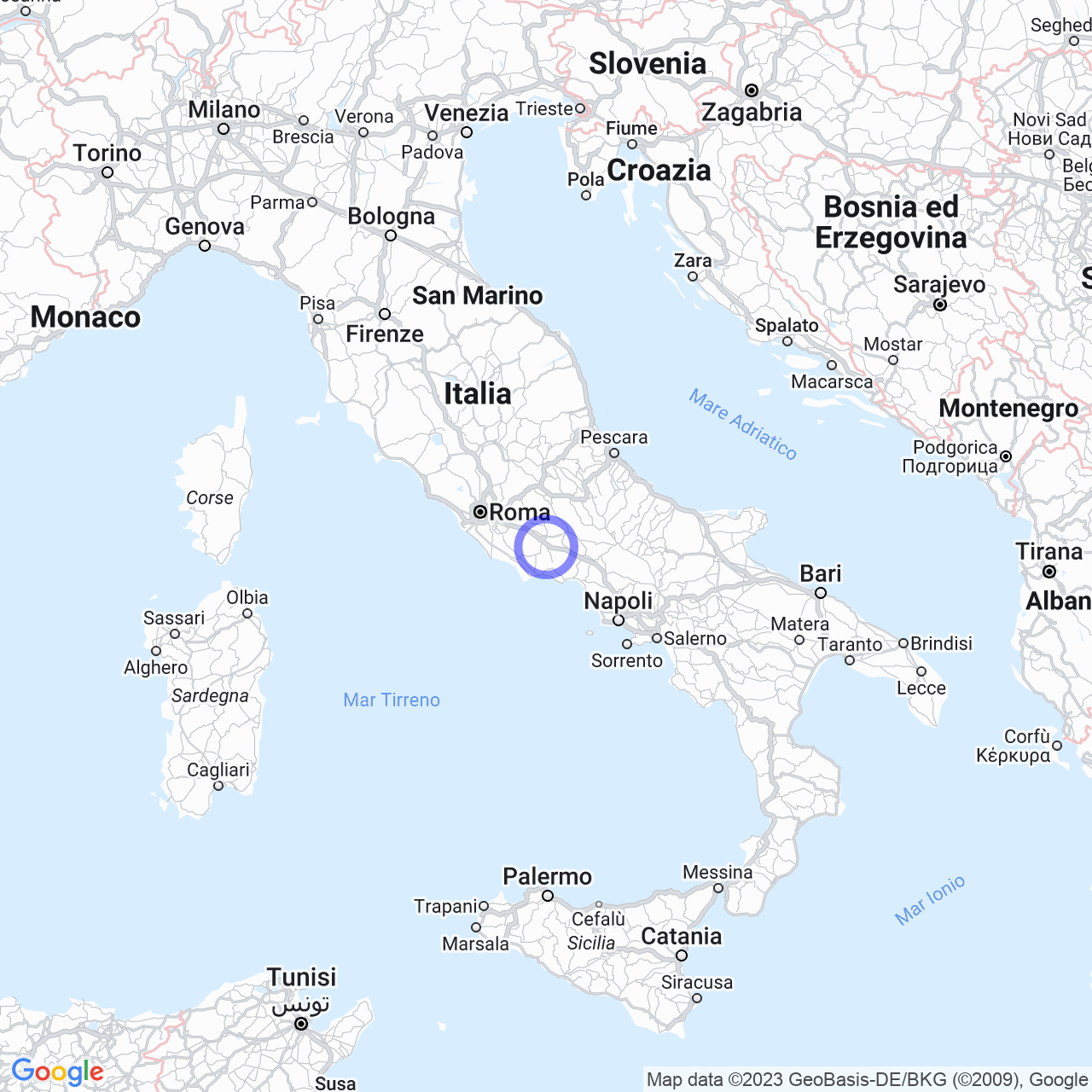Ceccano
Let's Explore Ceccano: A Journey through Its Physical Geography and Climate
Ceccano is a beautiful city located in the province of Frosinone, in Lazio, with a population of around 22,329 inhabitants. The city is situated in the Middle Valle Latina and is crossed by the Sacco and Cosa rivers. Ceccano falls under zone D in the Italian municipalities' climate classification, with an average of 1775 GR/G.
Ceccano's climate is typical of the lower areas of the Valle del Sacco. The city enjoys a Mediterranean climate with continental influences as it is not close to the sea. The continental characteristics are more evident in the summer maximum values and winter minimum values. The summer is generally hot, with average maximum temperatures between 31 and 33 degrees Celsius and lows around 19-20 degrees Celsius. Winter, on the other hand, is quite cold, with minimum values that in December and January often drop below zero in sunny and anticyclonic conditions, while the maximums average between 9 and 12 degrees Celsius in the coldest months.
Rainfall is mainly concentrated in the half-seasons but is generally scattered throughout the year with a minimum in summer. November is the rainiest month, while July is the driest (where rainfall is often from thunderstorms). Annual rainfall accumulations are higher than 1000/1200 mm, and snowfalls, although not frequent, can accumulate more than 50 cm of snow, as happened in the coldwave of February 2012.
Snow occasionally makes an appearance in winter, thanks to the cold cushion effect that occurs mainly in the areas of the Middle Valle Latina. This is about the prolonged presence of cold air in the lower layers of the atmosphere (following cold or frost waves), which keep the temperatures constantly low downstream even if there is a thermal rise in the higher levels, this happens due to the orography "a Conca (geology)" of the zone: the presence of the Lepini Mountains to the south and southwest and the Ernici Mountains towards the central Apennines.
History of Ceccano
Ceccano is a city with ancient and interesting history. It is considered the ancient "Fabrateria Vetus," a Volsci city already existing since 330 BC, and located along the banks of the Sacco river, which the ancient Romans called "Trerus" or "Tolerus."
The connection between Ceccano and 'Fabrateria' is based on ancient inscriptions found in the municipal territory between the 18th and 19th centuries. According to the local historian Michelangelo Sindici, the change of name from Fabrateria to Ceccano occurred in the seventh century in honor of Petronio Ceccano, Campagna's Consul, descendant of the Roman Emperor Titus, and father of Pope Honorius I.
In the Roman Martyrology of 2001, 'Fabrateria Vetus' is mentioned in reference to Magno di Anagni, patron saint of Anagni, which led to the rewriting of the history of the great saint, who was believed to have been martyred in Fondi.

Things to Do in Ceccano
Ceccano is a city that offers many options for visitors. There are many cultural structures and green spaces. For example, the Municipal Park, with its 80,000 square meters, is the perfect place to relax and enjoy nature. The park has several picnic areas, playgrounds, a skating rink, and a fountain. Additionally, the park hosts numerous events such as concerts, theatrical performances, and cultural festivals.
There are many museums in the city. The Municipal Archaeological Museum was inaugurated in 1991 and houses a vast ethnographic and archaeological heritage. The Civic Museum, located inside the Visocchi-Baroni Palace, houses a collection of historical artifacts from the city, including ancient artifacts and three works of art by Bernini. The Diocesan Museum is one of the oldest buildings in the city, housing the history of the local Church and the collection of sacred art.
The city is also famous for its parties and celebrations, such as the Ceccano Carnival, which takes place at the end of February. The celebration is characterized by a large parade of floats, masks, and handmade costumes. The San Giovanni Battista Fair, which takes place in June, is also a very popular event. This fair has ancient roots and is characterized by games, performances, exhibitions, and a wide range of local products.
Typical Cuisine of Ceccano
The local cuisine of Ceccano has a unique and delicious identity. One of the typical dishes of the city is the Tiella di Gaeta. This is a savory pie made from sausage, potatoes, cheese, and tomato, baked in the oven and accompanied by white wine.
Another very popular dish is Olive all'Ascolana, olives stuffed with ground meat and fried. The city is also famous for its local bread, whose traditional recipe involves the use of natural yeast and a long leavening to ensure maximum digestibility.
For those with a sweet tooth, we recommend tasting the typical Sanguinaccio, a tasty cocoa cream, and the local handmade amaretti.
Tourism in Ceccano
Ceccano is a tourist destination outside the usual tourist circuits. However, the city offers many opportunities for tourists. For example, the city is easily reachable by car from Rome and central Italy.
For history lovers, Ceccano offers several historical attractions such as the Castle of Ceccano, built in the 12th century, and the Cathedral of Santa Maria, dating back to the 14th century.
Furthermore, the city offers several outdoor activities, such as hiking, horseback riding, and mountain biking. The surrounding area is the ideal place to enjoy nature, walks, and outdoor sports.
In short, Ceccano is a small city with a lot to offer. Its geographical location, history, culture, gastronomy, and natural beauty make it a unique opportunity to enjoy an authentic Italian journey.
